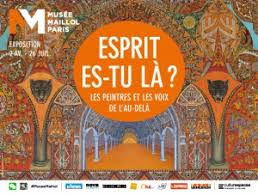
Figure 1.Esprit es-tu là Musée Maillol Exhibition Poster
Review by Beverly HELD Ph.D
I’ve got a little free association game for you today. What do kaleidoscopes and ouija boards, the Woody Allen films‘Magic in the Moonlight' and the other movie by Woody Allen, ‘Scoop,’ brings a young journalist student, a magician and a soul that cannot rest, together to bring to justice the man who killed the restless soul, not unlike the film ‘Ghost’ in which Whoopie Goldberg plays the medium ‘Scoop’, Sherlock Holmes and the song, ‘Is that all there is ’ have in common ? The exhibition at the Musee Maillol, that’s what. The exhibition’s title is a mouthful - Esprit es-tu là ? Les painters et les voices de l’au-delà, (“Spirit are you there? Painters and voices from beyond” ) First a disclosure: this is not the sort of exhibition I normally seek. The here and now is quite enough for me to deal with, thank you very much. The cosmic and the extra-terrestrial, too much. I know how short our time, how insignificant our place. But the spiritual in art is the subject of this exhibition and so for you, dear reader, I went to see it. And you will not be surprised to learn that I have a few things to say, The timing of this exhibition seems uncannily right for right now, bumbling along as we are, in a terra incognito of pandemic panic, financial crisis, demonstrations for social justice and threats to cherished institutions in the name of ‘Law and Order’. At a moment like this, when we are asking ourselves ‘is that all there is?’ this exhibition suggests that no, there is more to all this than meets the eye. And whether you believe in the afterlife or not, whether you believe you can communicate with the departed or not, let’s hop on this bus and see where it takes us. Solace is in short supply these days, let’s see if we can find some.
I was reading an article the other day by Eleanor Heartney from January 2020, about Spirituality, which is, according to the author, being taken seriously by art history for the first time in 70 years. That’s what happens during times of upheaval. Now as then, people are looking for alternative ways to understand, to interpret, reality. A century ago, it was the rise of modern capitalism that undermined existing social systems and scientific discoveries that challenged religious beliefs. When Heartney’s article appeared, it was just the unchecked destruction of the planet, global tensions and greedy capitalists. It was months before the pandemic and subsequent initially unimaginable events turned our world upside down.
Let’s start with defining Spiritualism. It is a religious movement based upon the belief that spirits of the dead exist, that they are able and willing to communicate with the living. When and how did Spiritualism get started ? Usually questions like that get vague answers. Not this time. I can tell you unequivocally that Spiritualism started on March 31, 1848, in Hydesville, New York when two sisters, Kate and Margaret Fox (Figure 2) told people that they had made contact with a spirit living in their house. This spirit communicated with them through rapping noises. The sisters became instant celebrities, without the help of Facebook, Twitter or Instagram. They became their own reality (or unreality) show, starting a spiritualist consulting firm and holding public séances throughout the United States and Europe. Forty years later, the Fox sisters admitted that their spirit 'contact' was a hoax, an admission they subsequently recanted. Who knows? Reading about these girls reminded me of Woody Allen’s film ‘Magic in the Moonlight’. You are probably surprised that I am talking about Woody. But I am conflicted. There have been too many incidences of children’s memories being created for them by (sometimes well-meaning) adults. The movie takes place in the 1920s and revolves around the efforts of a magician to debunk a medium. This magician, like Harry Houdini, despises false claims made by phony spiritualists. Like the Fox sisters, the medium in the film is a young woman who does eventually admit to being a fraud. it is a great movie, see it. It reminded of another moment in history when impressionable young girls first declared something to be true and then recanted. The young girls in Salem, Massachusetts, in the 1690s, were responsible for the deaths of innocent women. The Fox sisters may have died penniless but they weren’t hanged. The other movie by Woody Allen, ‘Scoop,’ brings a young journalist student, a magician and a soul that cannot rest, together to bring to justice the man who killed the restless soul, not unlike the film ‘Ghost’ in which Whoopie Goldberg plays the medium.
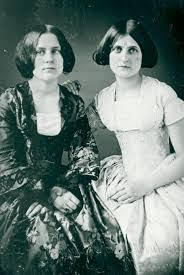
Figure 2. The Fox Sisters of Hydesville, New York
While the Fox sisters were debunked, by themselves, Spiritualism lived on and flourished until about 1920. Lots of people wanted to get into the act, and some looked to Ouija boards to get them there. There is one in a case in the first room of the exhibition we are talking about. Did you ever use a Ouija board ? I have. It is basically a flat board marked with the letters of the alphabet, the numbers 0–9, the words 'yes', “no”, 'hello' and 'goodbye', along with various symbols. (Figure 3) I remember putting my fingers onto the small piece of wood, a planchette, that slid around, spelling out a message. I never felt it was sliding around on its own. One of us or another seemed to direct its movement towards the letters that would spell answers we wanted to the questions we asked. Spiritualists may have believed that the dead were contact the living with a Ouija board but ”Ouija” is now a trademark of Hasbro.
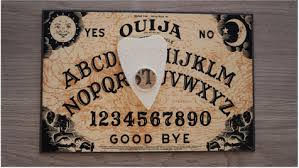
Figure 3. Ouija Board
Back to the exhibition. Along with the ouija board, there is a tipping table on display. (Figure 4) You know the tables around which people sat that would sometimes levitate during a seance. In 1853, we are told, when Victor Hugo was on Jersey, he participated in tipping table seances. He communicated with his dead daughter Leopoldine and after that, there was no stopping him, he communicated with, among others, Shakespeare, Jesus and Mohammed. On the walls of the first room you will also find bust portraits and brief bios of Spiritualism believers, from Arthur Conan Doyle, who wrote more books about spiritualism than about his hyper rational detective and Thomas Edison who invented the telephone to talk to the dead. In addition to Victor Hugo, Honore de Balzac, Sigmund Freud and the Curies, (when they weren’t poisoning themselves with radium and polonium) all believed in the possibility of communicating with the dead.
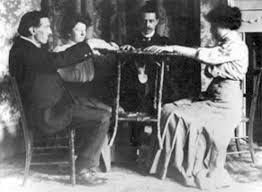
Figure 4. Tipping Table, levitating during a seance
The main focus of the exhibition are three Frenchmen: Augustin Lesage, Victor Simon and Fleury-Joseph Crépin, all from northern France, all laborers, each of whom heard a voice encouraging him to paint. The first artist discussed and the one given the most gallery space is Augustin Lesage who was born into a family of miners, where he too began working as soon as he was old enough. When he was 35 (1911), he claimed that he heard a voice when he was in the mine, telling him that he would be a painter one day. He recognized the voice, it was his little sister who had died when she was three. Within a year, Lesage was hearing more voices, now giving him specific instructions about what art supplies to buy and where to find them. I guess the voice was not all that clear because the first canvas he bought was ten times larger than he was supposed to buy. His spirit guides told him not to worry and just begin painting. Which he did. (Figure 5) Lesage’s style is highly symmetrical, with detailed patterns and monolithic constructions reminiscent of Egyptian and Oriental architectural forms. Lesage claimed that he never knew what he was going to paint, “I never have an overview of the entire work at any point of the execution. My guides tell me; I surrender to the impulse.” That is very like how the 12th century German mystic, Hildegard of Bingen described her work. She insisted that she was the conduit through which the Spirit moved. An image of her dictating to a scribe shows how she received divine inspiration (Figure 6) At first Lesage didn’t sign his paintings, then he signed them 'Leonardo Da Vinci.' Eventually, he used his own signature. After his service in World War I, he returned to painting and earned enough money selling his paintings hat he was able to paint full time. When I look at Lesage’s work, it is like looking into a kaleidoscope. You know, those tubes that you hold up to one eye and gaze through in delight at the ever changing symmetrical patterns that you see at the other end of the tube. (Figures 7) This exhibition places Lesage’s work in the Spiritualist movement. The artist Jean Dubuffet who bought some of Lesage’s paintings, considered Lesage’s work, to be Art Brut or Outsider Art, a term Dubuffet coined. Initially used to describe the art of the mentally ill or prison inmates or children, the definition expanded to include any self trained artist or even artists who sought the childlike in their art, like Paul Klee, for example.
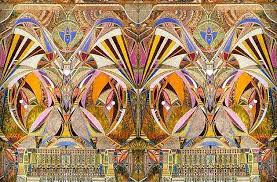
Figure 5. Painting by Augustin Lesage
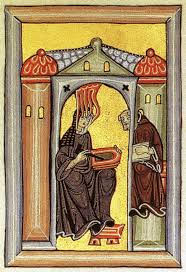
Figure 6. Hildegard of Bingen, 12th century mystic receiving divine inspiration
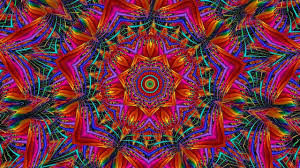
Figure 7. Kaleidoscope
The second artist highlighted in this exhibition is Joseph Crepin, a friend of Augustin Lesage. For most of his life, Crépin worked as a plumber, a roofer and a clarinetist. Crépin began painting in his 60s. (Figure 8) He said he was told what to paint by the dead. His paintings, like Lesage’s are meticulously detailed flat compositions of fantastic architectural forms. Despite starting late, he was prolific. He prophesied that he would bring peace to the world once he had completed 300 paintings. And sure enough, his 300th painting was finished on the same day the Nazis surrendered to the Allies. (Figure 9) Crépin too is recognized as both a spiritual painter and an Outsider artist.
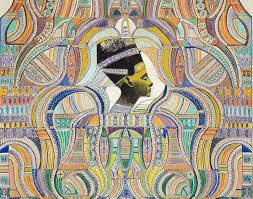
Figure 8. Painting by Fleurie Joseph Crepin
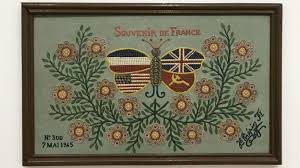
Figure 9. Painting by Crepin celebrating the Allies of World War II
The third artist, Victor Simon was, like Lesage, a miner and the son of a miner. In 1933 he received his first message from the beyond. Simon painted his first monumental canvas, ‘Resurrection 1’ that year. For the next 40 years, Simon painted hundreds of small and a few large canvases. They are all composed like a written page, from top to bottom and from left to right. The colors are drops of pure pigment and like Lesage and Crepin, his compositions are geometric with arabesques and Egyptian hieroglyphs, and sometimes Hindu and Byzantine motifs. (Figure 10)
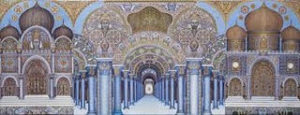
Figure 10. Painting by Victor Simon
Although the exhibition is mostly devoted to these three men, there are some women in the exhibition, among them Elise Muller aka Helene Smith, Eusapia Palladino who held seances (Figure 11) and Magde Gill (Figure 12). The men’s paintings are mostly geometric and architectural, the women’s paintings are typically more organic with softer lines and references to human or plant life. Contemporary artists make their appearance at the exhibition, too. Mostly men, mostly working in geometric pattern. So, we know that voices from beyond, visions, too; the spirit, the Spiritual, compelled these people, some artists, some not, to create, We know or think we know that they were each moved by external forces to create on canvas. But what about the viewer. Are we supposed to be moved by them, our souls touched and changed by them ? Wassily Kandinsky, the Russian artist who was involved with theosophy and Madame Blavatsky and Rudolf Steiner and don’t get me started on who else, thought so. (Figure 13) He wrote in his 1910 book, Concerning the Spiritual in Art that “(t)he artist has a triple responsibility to the non-artists: (1) He must repay the talent which he has; (2) his deeds, feelings, and thoughts, as those of every man, create a spiritual atmosphere which is either pure or poisonous. (3) These deeds and thoughts are materials for his creations, which themselves exercise influence on the spiritual atmosphere.”
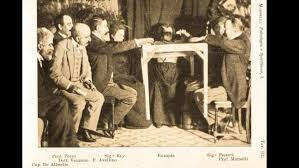
Figure 11. Artist Eusapia Palladino holding a seance
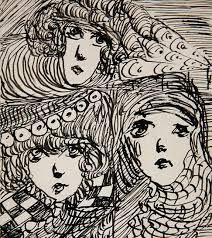
Figure 12. Detail of a painting by Magda Gill
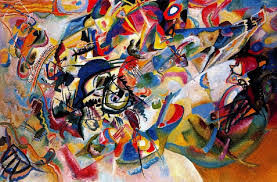
Figure 13. Wassily Kandinsky, Composition 7, 1911
At the very end of the exhibition is a parlor in which you are invited to sit down (social distancing enforced) to see and hear, holograms of several men and a woman speaking of their experiences as mediums, as Spiritualists. It was weird, but totally in keeping with the show. So, go see it, if your spirit is touched and you find solace in the paintings, that is great. If, for you, it is more an intellectual perusal, that’s fine, too. But the museum is open and that is a good thing, a very good thing !
Reserve your visit at Musée Maillol

2 comments
Kathryn Joseph June 30, 2020
B, while you were there, did the spirits tell you when I might get to Paris to see the exhibit? I've just learned so much, thank you.
Deedee Remenick June 30, 2020
As always, I have learned so much, and am so sad not to be able to visit these museums T this time.